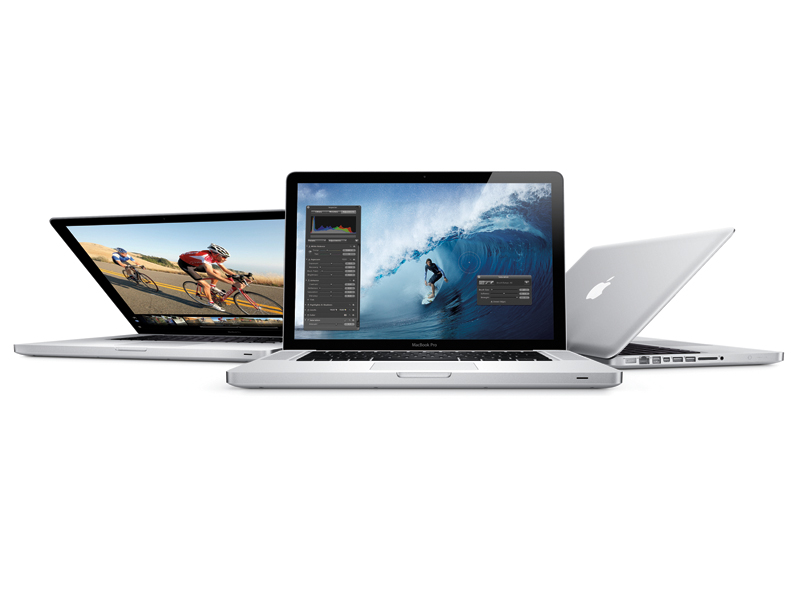Why you can trust TechRadar
Performance
The early 2011 17-inch MacBook Pro offers the same basic configuration as the more expensive of the two 15-inch models; the only differences are an extra USB port, an ExpressCard/34 slot instead of an SDXC card reader and, of course, a larger screen size.
So it's unsurprising that in our benchmarking tests, the new 17-inch quad core 2.2GHz Core i7 MacBook Pro scored almost identically to the 15-inch quad core 2.2GHz Core i7 release. However, the 17-inch model it replaces, mid-2010's 17-inch 2.53GHz Core i5, enjoyed parity with the mid-range 15-inch model rather than the high-end version.
This change is, of course, partly due to Apple releasing only two 15-inch versions with this refresh instead of the three options available with the mid-2010 update, but the move is nevertheless welcome. Having a single 17-inch MacBook Pro that wasn't as powerful as the high-end 15-inch model just didn't seem right.
Checking CPU, memory and hard drive performance with Xbench, the new 17-inch notebook outperformed its predecessor by just over 20 per cent.
The performance increase was even more pronounced when we compared their rendering capabilities using Cinebench. Using only one core, the new MacBook Pro was almost 30 per cent better, but with every available core in play it more than doubled the older model's score.
The 17-inch MacBook's AMD Radeon HD 6750M discrete graphics processor comes into play automatically when running graphics-intensive applications such as games.
Doom 3, which was released for Mac in 2005, ran at a speedy 171.5 frames per second with its graphical settings at a system-hungry maximum. This is comfortably ahead of the 115.3fps its predecessor achieved with the same settings.
Sign up for breaking news, reviews, opinion, top tech deals, and more.
The more modern Call of Duty 4, which reached the Mac in late 2008, ran at an agreeable 84.3 frames a second.
We've been unable to run a time test on the Thunderbolt port because no compatible storage peripherals have been released at the time of writing, but we did see it in action at Apple's launch briefing.
A large data file was transferred between a MacBook Pro and a prototype Thunderbolt external drive very quickly. We can quite believe Intel's claim that a full HD movie can transfer in around 30 seconds, and enough 196kbps MP3s to play for an entire year can be backed up in around ten minutes.
Apple says the battery gives seven hours on a full charge, which on paper is down from the eight to nine hours claimed for the previous model. But this apparent reduction is due to a more rigorous testing regime rather than a genuine drop in battery power. These new tests are based on Wi-Fi internet surfing, and better reflect the realities of real-world use.
In our own test, we ran the BBC iPlayer's live feed over Wi-Fi at fullscreen for five hours, 35 minutes on a full charge, a very commendable result.
No review would be complete without a few grumbles, but thankfully, there aren't many here. We still haven't got a Blu-ray drive, not even as a custom option, but we weren't expecting one. Apple seems to have skipped this particular piece of technology.
A faster DVD drive would've been welcome, though. The 8x SuperDrive is looking very tired. Our iTunes encoding test has plateaued at just under six minutes to rip our test CD, with the optical drive proving the limiting factor.
With every Mac refresh bringing across-the-board performance improvements in all other tests, seeing no improvement in around two years in the iTunes test is almost embarrassing.
Although such a massive performance boost for an extra £160 represents a very good value for money increase, £2,099 is still a lot to pay for a laptop, and at that price, the optional antiglare screen shouldn't cost an extra £40.
But even at the price, the early 2011 17-inch MacBook Pro is worth considering if you're looking for quality and a large screen. It can't be faulted for performance, its unibody build makes it strong yet surprisingly light and its screen is magnificent, boasting a resolution better than Full HD, along with great viewing angles.
The MacBook Pros are also full of agreeable extras, such as a backlit keyboard and a magnetic power cord that won't pull your notebook off the desk if someone trips over it.
Current page: Apple MacBook Pro 17" (2011): Performance
Prev Page Apple MacBook Pro 17" (2011): Specification Next Page Apple MacBook Pro 17" (2011): Verdict